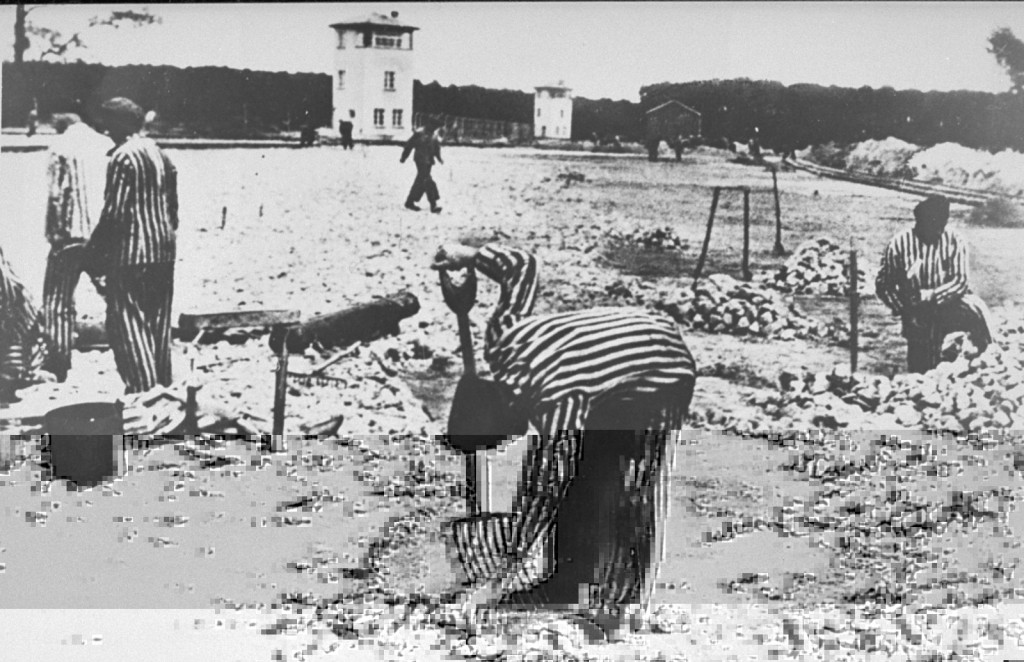You searched for: 区块宠物源码快速搭建【TG���������@EK7676】平台包网搭建区块宠物源码快速搭建【TG���������@EK7676】平台包网搭建6oa78Mkwex
<< Previous | Displaying results 71-80 of 267 for "区块宠物源码快速搭建【TG���������@EK7676】平台包网搭建区块宠物源码快速搭建【TG���������@EK7676】平台包网搭建6oa78Mkwex" | Next >>
-
Polish citizenship certificate issued to Samuel Solc
DocumentThis page of a Polish citizenship certificate issued to Samuel Solc contains two visas. The first (left), stamped by the British Passport control in Shanghai, allowed Samuel to travel to Palestine via Burma, India, Egypt, and Rangoon. The second visa (right) bears the British Mandate "Government of Palestine" stamp, dated February 6, 1942, and allowed Samuel to remain in Palestine permanently. [From the USHMM special exhibition Flight and Rescue.]
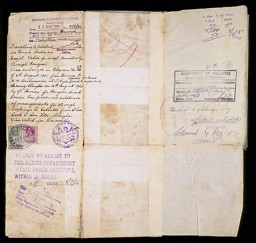
-
Evian Conference fails to aid refugees
FilmDelegates of 32 countries assembled at the Royal Hotel in Evian, France, from July 6 to 15, 1938, to discuss the problem of Jewish refugees. The refugees were desperate to flee Nazi persecution in Germany, but could not leave without having permission to settle in other countries. The Evian Conference resulted in almost no change in the immigration policies of most of the attending nations. The major powers--the United States, Great Britain, and France--opposed unrestricted immigration, making it clear…
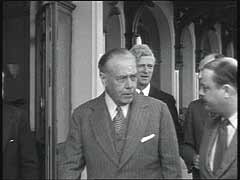
-
Auschwitz I camp, 1944
MapSelected Features 1. Camp Commandant's House 2. Main Guard House 3. Camp Administrative Office 4. Gestapo 5. Reception Building/Prisoner Registration 6. Kitchen 7. Gas Chamber and Crematorium 8. Storage Buildings and Workshops 9. Storage of Confiscated Belongings 10. Gravel Pit: Execution Site 11. Camp Orchestra Site 12. "Black Wall" Execution Site 13. Block 11: Punishment Bunker 14. Block 10: Medical Experiments 15. Gallows 16. Block Commander's Barracks 17. SS Hospital

-
A US soldier stands among the corpses of prisoners exhumed from a mass grave near Nammering
PhotoA US soldier stands among the corpses of prisoners exhumed from a mass grave in a ravine near Nammering. On April 19, 1945, a freight train with nearly 4,500 prisoners from Buchenwald pulled onto the railroad siding at Nammering. Hundreds of prisoners who had died on the train were buried in the mass grave along with the prisoners who were forced to carry the corpses to the ravine and were then shot. Germany, ca. May 6, 1945.
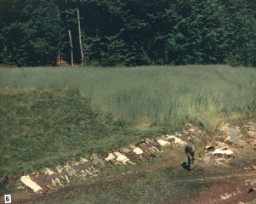
-
Amalie and Norman Salsitz with a copy of their book
PhotoJune 6, 1991, photograph showing Amalie and Norman Salsitz with a copy of their book, Against All Odds. With the end of World War II and collapse of the Nazi regime, survivors of the Holocaust faced the daunting task of rebuilding their lives. With little in the way of financial resources and few, if any, surviving family members, most eventually emigrated from Europe to start their lives again. Between 1945 and 1952, more than 80,000 Holocaust survivors immigrated to the United States. Norman was one of…
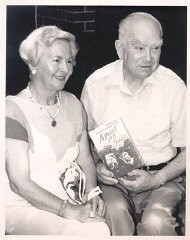
-
Gurs
ArticleIn 1939, the French government established the Gurs camp. Learn more about the history of the camp before and after the German invasion of France.
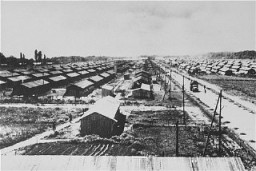
-
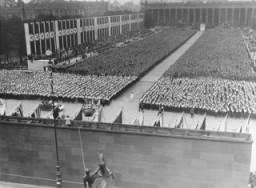
-
Subsequent Nuremberg Proceedings
ArticleAmerican military tribunals presided over 12 Subsequent Nuremberg Proceedings against leading German industrialists, military figures, SS perpetrators, and others.
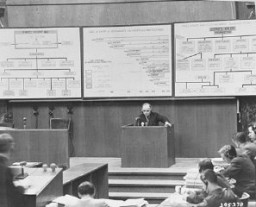
-
Norman Salsitz
ArticleRead the Jewish Partisan Educational Foundation's short biography of Norman Salsitz.
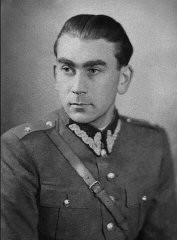
-
The 1st Infantry Division during World War II
ArticleThe 1st Infantry Division participated in major WWII campaigns and is recognized for liberating two subcamps of Flossenbürg in 1945.
